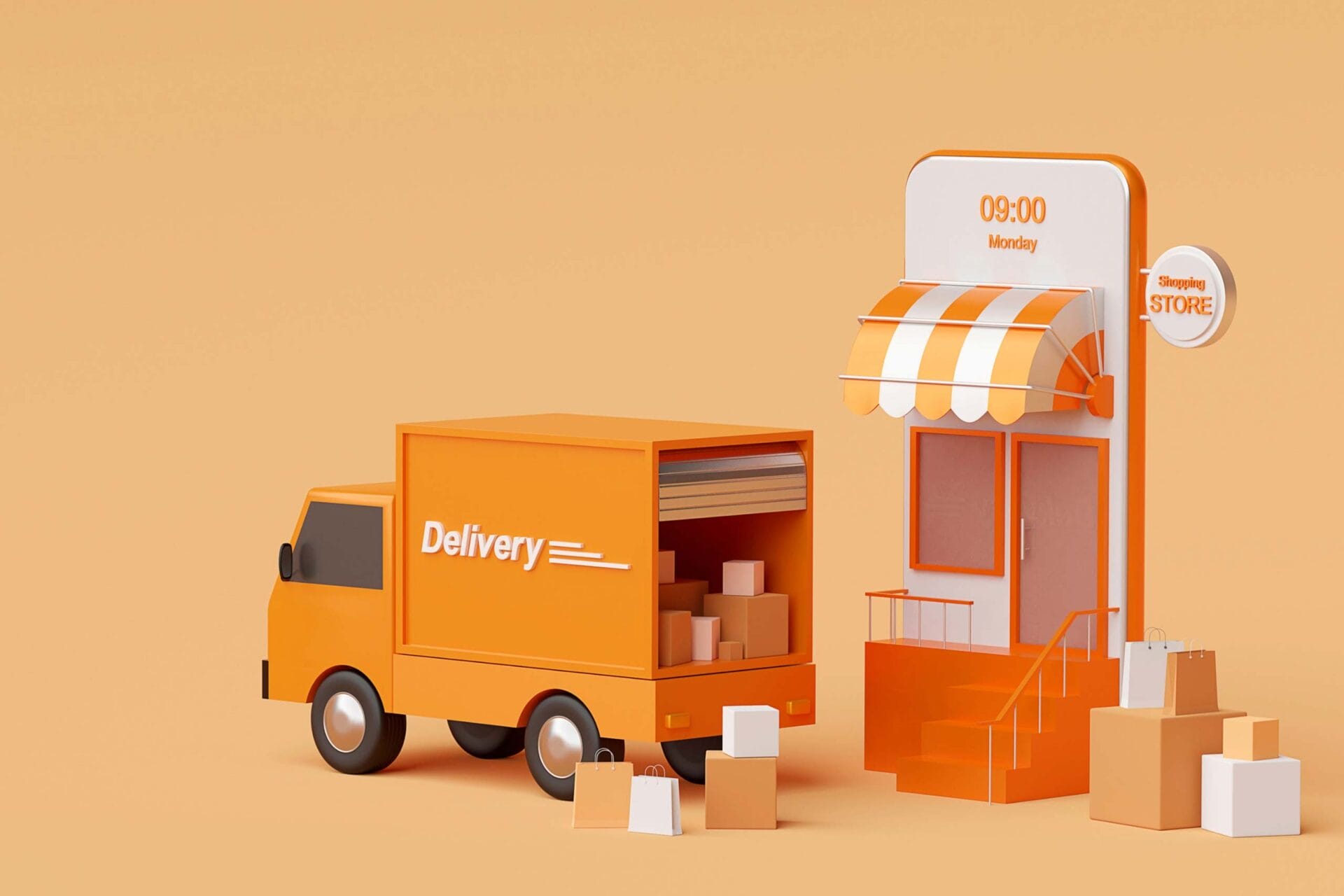News & Insights
An Introduction to Amazon DSP
Amazon advertising is often an important part of winning on the platform. But it can also play a role for e-commerce brands who aren’t relying on Seller Central to reach all of their customers. Instead, Amazon’s Demand Side Platform allows companies to launch a video or display ad campaign that capitalizes on the marketplace’s massive audience and data collection and drive customers to any website they choose. Keep reading to find out more.
What is Amazon’s Demand Side Platform?
The Amazon Demand Side Platform (DSP) was initially introduced to advertisers as the Amazon Advertising Platform (AAP). Demand Side Platforms are a popular tool in the online advertising industry due to their ability to streamline and automate the buying and selling of online advertising. This programmatic approach allows advertisers and media buying agencies to bid automatically on ad inventory, including product display ads, video, mobile and search ads across multiple online properties.
Similar to the DSP from companies like Google and Adobe, Amazon’s DSP is designed to attract high-volume advertisers seeking a programmatic digital media campaign. The flexibility and reach offered by a DSP can be an efficient and cost-effective way to drive awareness and increase sales for brands with a substantial advertising budget and a clear understanding of their target audience.
What are the benefits of Amazon DSP?
Amazon DSP features extensive benefits for its users, but it’s not intended for every e-commerce brand. But before determining if the service is a good fit for your company, you need to understand what it offers.
First, because the available ad inventory spans more than just the Amazon marketplace, it can provide incredible reach. Ads purchased via Amazon DSP can appear on Amazon.com, on Amazon-owned websites such as IMBd or Twitch, on Amazon devices like the Kindle or Fire tablet, or on any other third-party websites that are part of the Amazon DSP network.
In addition, Amazon DSP offers incredible targeting options. Due to the popularity of the Amazon marketplace, the company can collect a vast amount of data on the characteristics and habits of its millions of users. They can then use this information to help brands target prospective customers that match a particular profile. Amazon DSP campaigns can be targeted with countless combinations of demographics, geographic location, lifestyle interests, product interests, actions taken on Amazon and more.
As a leader in DSP, Amazon can provide better protection for your brand when participating in programmatic advertising. The company places a significant emphasis on ensuring that the inventory of ad space is limited to high-quality websites that won’t put its advertisers’ brands at risk with questionable content or flawed traffic. You can also expect a similar commitment regarding ad viewability and dashboard reliability.
Finally, Amazon DSP provides deep data reporting to its advertisers. These metrics can be used to manually or automatically adjust campaigns and optimize their performance. The insights can reveal ways to refine targeting, improve creative designs and tweak bid strategies to maximize budgets. In addition, the data can be a valuable path to upgrading other areas of a brand’s marketing efforts thanks to the details about customers that it can reveal.
Is DSP the same as Amazon Sponsored Display?
In a word, no. Amazon DSP and Amazon Sponsored Display are two entirely different advertising options. However, that doesn’t mean there aren’t some similarities. Both rely on Amazon’s huge database of consumer data to help brands reach customers with display advertising across the internet. In addition, the targeting options offered to advertisers are similar. However, despite their shared purpose and capabilities, the differences remain substantial.
While Amazon Sponsored Display is limited to product display ads and Amazon sponsored brand ads that promote an Amazon seller and drives traffic only to the Amazon platform, Amazon DSP is open to any company that wants to reach an audience using Amazon’s data and ad inventory. Amazon DSP ads can direct those who click them to any website, not just an Amazon listing.
Amazon DSP also focuses on serving brands planning to commit significant money to their digital ad campaign. While Sponsored Display advertisers can spend as little as $1 on their ads, the minimum ad spend for an Amazon DSP campaign is $35,000 for managed service and even more for the self-service option aimed at third-party advertising companies. The pricing model used also differs between the two approaches, but more on that to come.
While Amazon Sponsored Display ads are based on templates built from an Amazon listing and provide minimal opportunities for customization, Amazon DSP advertisers can design their own ad creative featuring the logo, copy and image of their choosing.
Sponsored Display and DSP both offer targeting options such as remarketing to shoppers who have previously viewed a product or focusing on users with a particular interest, but DSP targeting is much more granular. Sponsored display targeting is based on choosing from a limited number of Amazon-designed approaches, while an Amazon DSP campaign can be created from scratch using all of Amazon’s available customer data.
Who can advertise with Amazon DSP?
As mentioned, Amazon DSP is available to any brand, whether or not they sell their products on the Amazon site. Other than minimum budget, the only restrictions to using Amazon DSP are that a company meets Amazon’s general advertising requirements.
In many cases, the brands utilizing Amazon DSP do so with the help of a marketing agency or Amazon service provider. The high cost involved means it’s not an undertaking you want to begin without some knowledge and experience. While every campaign can benefit from continuous evaluation and optimization, starting with a successful foundation is best.
Also, because Amazon DSP is not limited to directing traffic back to an Amazon listing, it may be best suited for companies that aren’t relying on Amazon for the entirety of their sales. For example, companies with independent e-commerce stores can use DSP to drive Amazon shoppers to that site and increase sales without sharing a piece of that revenue with Amazon.
Who can the ads be targeted to?
One of the most significant advantages of Amazon DSP over other types of digital marketing lies in the ability to target the ads to very specific audiences. Custom segments can be built using Amazon’s demographic and user activity data. The primary ways that a potential customer can be targeted include:
Contextual Targeting: Identifies shoppers who are actively viewing specified products that are related to your brand.
In-Market Targeting: Segments shoppers who have recently purchased or considered purchasing an Amazon product within one of the platform’s specified product categories.
Lifestyle Targeting: Uses search and purchasing habits to identify shoppers who fall into certain lifestyle groups, such as outdoor enthusiasts or foodies.
Remarketing: A popular method of displaying ads promoting a product to people who have recently searched for, viewed or purchased that product.
Audience Lookalike Targeting: Focuses on prospects who share demographic characteristics and online behaviors with a brand’s existing customers.
Advertiser Audience Targeting: Amazon DSP advertisers can upload a list of customers they want to target, such as those who have opted into communications with the company or otherwise provided their contact information.
What pricing model does Amazon DSP use?
Unlike Amazon Sponsored Display, Amazon DSP relies on a Cost per Mille (CPM) pricing structure. Advertisers are charged based on the average cost to deliver 1,000 impressions of an ad, rather than a Pay Per Click (PPC) model where they are charged each time someone clicks on an Amazon ad.
CPM and PPC can benefit advertisers in different ways. Campaigns with high click-through conversions can be more cost-effective when paying by impressions rather than clicks. They can also be better suited for brand awareness efforts that aren’t as focused on driving traffic to a particular site.
Similar to PPC campaigns, the CPM pricing used by Amazon DSP still utilizes an automated bidding process to sell ad inventory. After uploading ads and specifying targeting criteria, brands must choose a maximum bid amount for the campaign. When users within the ideal audience visit a site, the bid amount will determine which ad will be shown to them. Successfully optimizing your bid strategy to balance costs and reach often requires careful consideration and familiarity with online advertising.
What types of ads are available?
Amazon DSP provides a lot of flexibility when it comes to ad design. In addition to being fully customizable in terms of how they look, the Amazon marketing service also offers several variations of ads to help make the most of your ad budget and ensure potential buyers are shown the most enticing versions of your ads.
Dynamic eCommerce ads (DEA): DSP advertisers with Amazon listings can use these ads to showcase individual products. Ads are created by selecting an ASIN that links shoppers to the corresponding product detail page. Amazon will automatically determine which version of this ad shows based on your campaign goal.
Responsive eCommerce creatives (REC): Similar to DEA, these Amazon ads also feature Amazon products. The major difference is advertisers can simultaneously create multiple sizes and promote up to 20 ASINs via a single process.
eCommerce Custom Image: Both DEA and REC advertising can now be upgraded to include custom images, fonts or copy that enhance the advertiser’s brand and differentiate from a standard Amazon-created version.
Custom image creative: These ads use brand-specific design, layout, and copy, rather than pulling content from a product detail page. They also don’t have to link back to an Amazon listing and can instead drive traffic to a custom landing page, proprietary e-commerce site or Amazon Storefront.
Video Ad: Amazon DSP also includes video ads in its inventory of placements. Advertisers can promote products using both online video ads that reach internet users as they browse or streaming TV ads that are integrated into streamed content.
Do I need help to get started with Amazon DSP?
In almost every case, the answer will be yes. The source of the help may vary dramatically, though. Brands that opt to pursue an Amazon DSP campaign do have two options to do so. One is to begin a Managed-Service relationship with Amazon and let the company handle the strategy, execution and optimization. However, this path also comes with a 15 percent management fee, along with the $35,000 minimum ad spend. Brands that choose this option may also have limited access to the reporting capabilities in the form of a final report on the campaign rather than real-time reporting.
Alternatively, Amazon DSP offers a Self-Service option to those who can spend up to $100,000 per month on the platform. Due to its high budget requirements, most sellers that pursue this route do so via an authorized Amazon marketing agency that meets the minimum spend by working with multiple advertisers. In some cases, these agencies may charge a management fee below Amazon’s 15 percent option, adding to their value. In addition, accessing the self-service option through an agency or a hefty ad commitment puts brands in complete control of their Amazon DSP campaigns.
Expand your reach even more with Amify
Take the first step to unlocking new growth for your business on Amazon by reaching out to the experts at Amify. Whether you need help with Amazon store development, data analysis or logistics management, our team can put you in a position to take advantage of everything the Amazon marketing platform has to offer. Contact us today.
More Resources And Articles
Contact Us
Learn more about how we can help your Amazon business succeed!
- hello@goamify.com
- 2722 Erie Ave STE 219, #80215 Cincinnati, Ohio 45308







